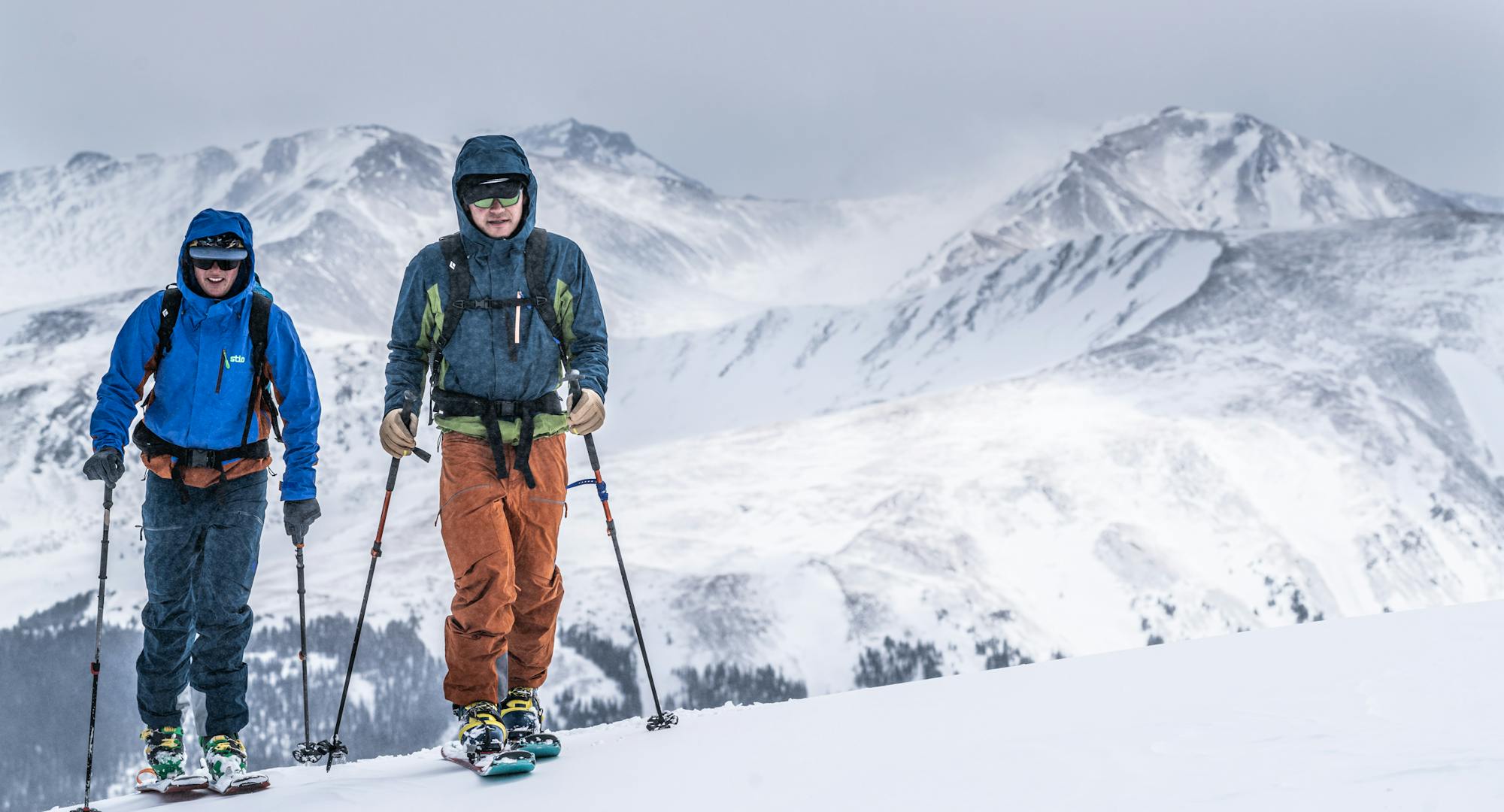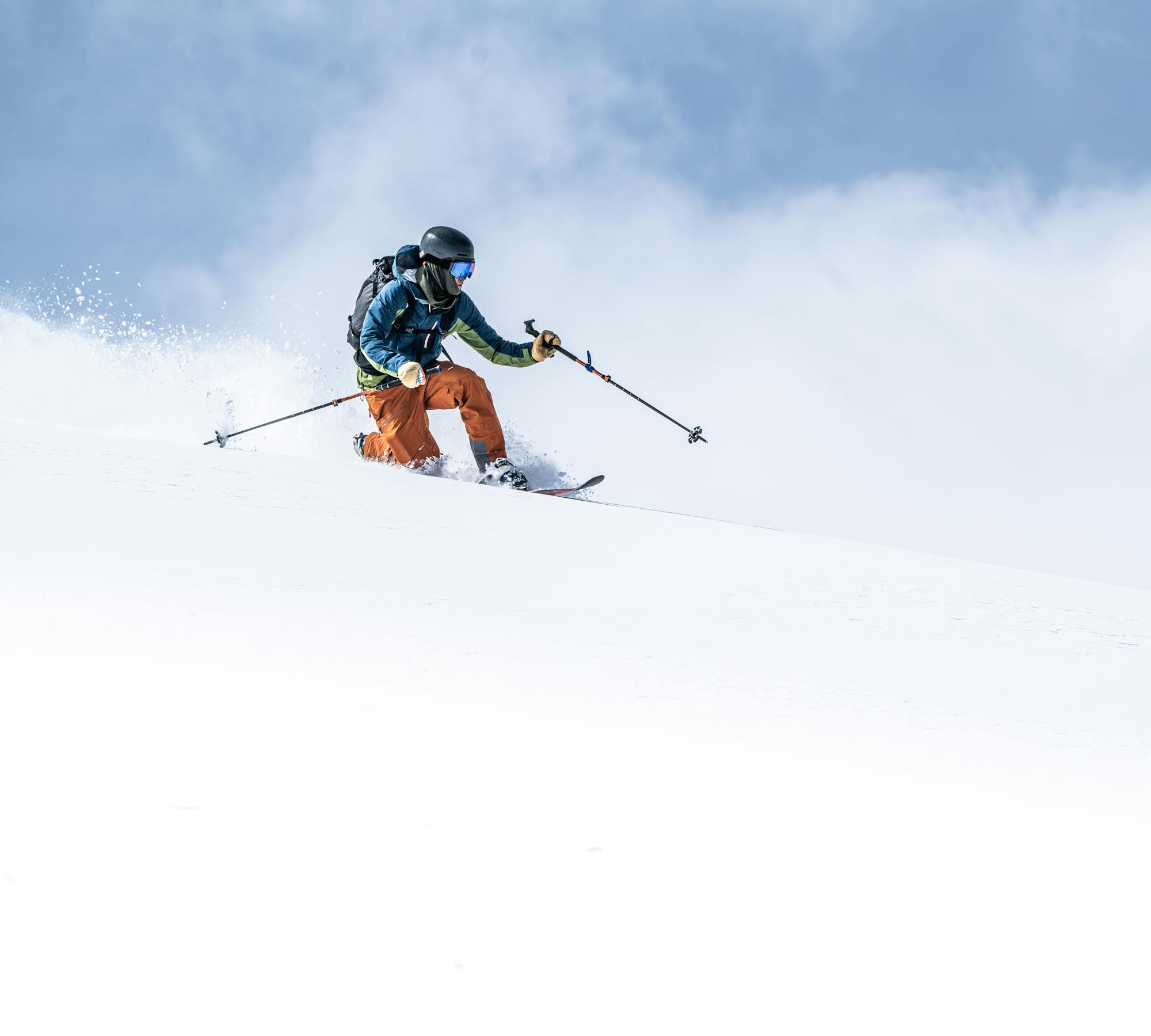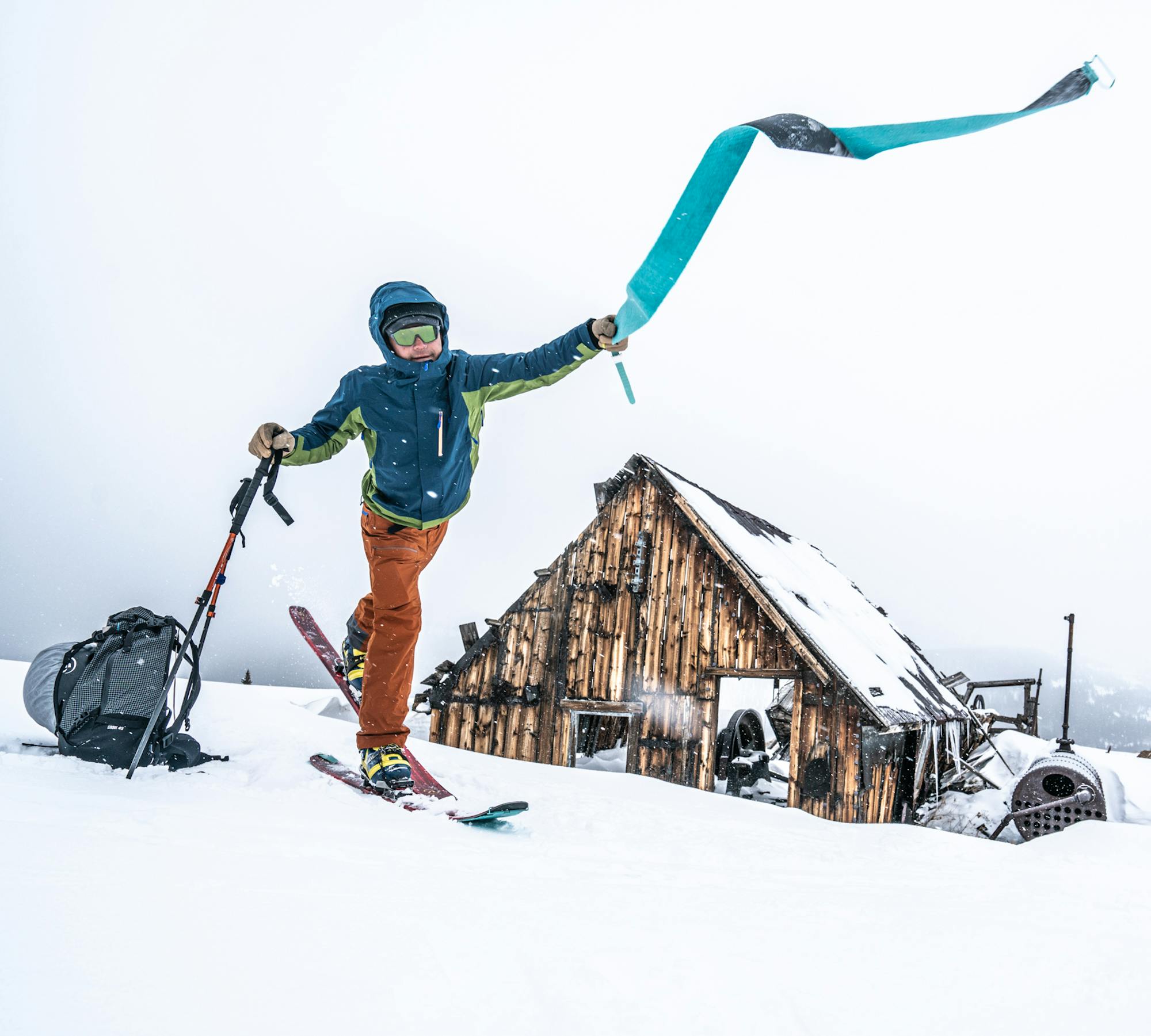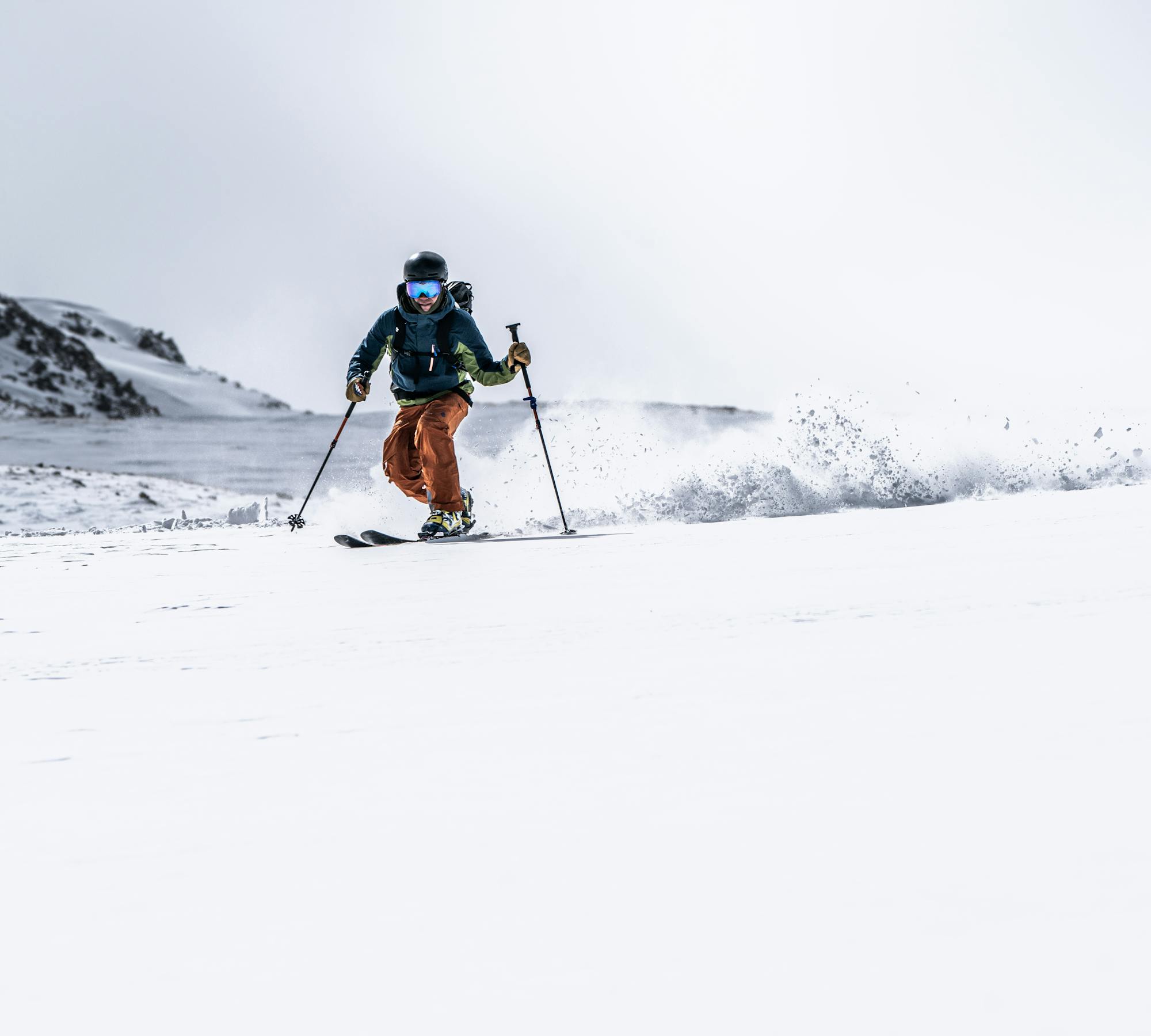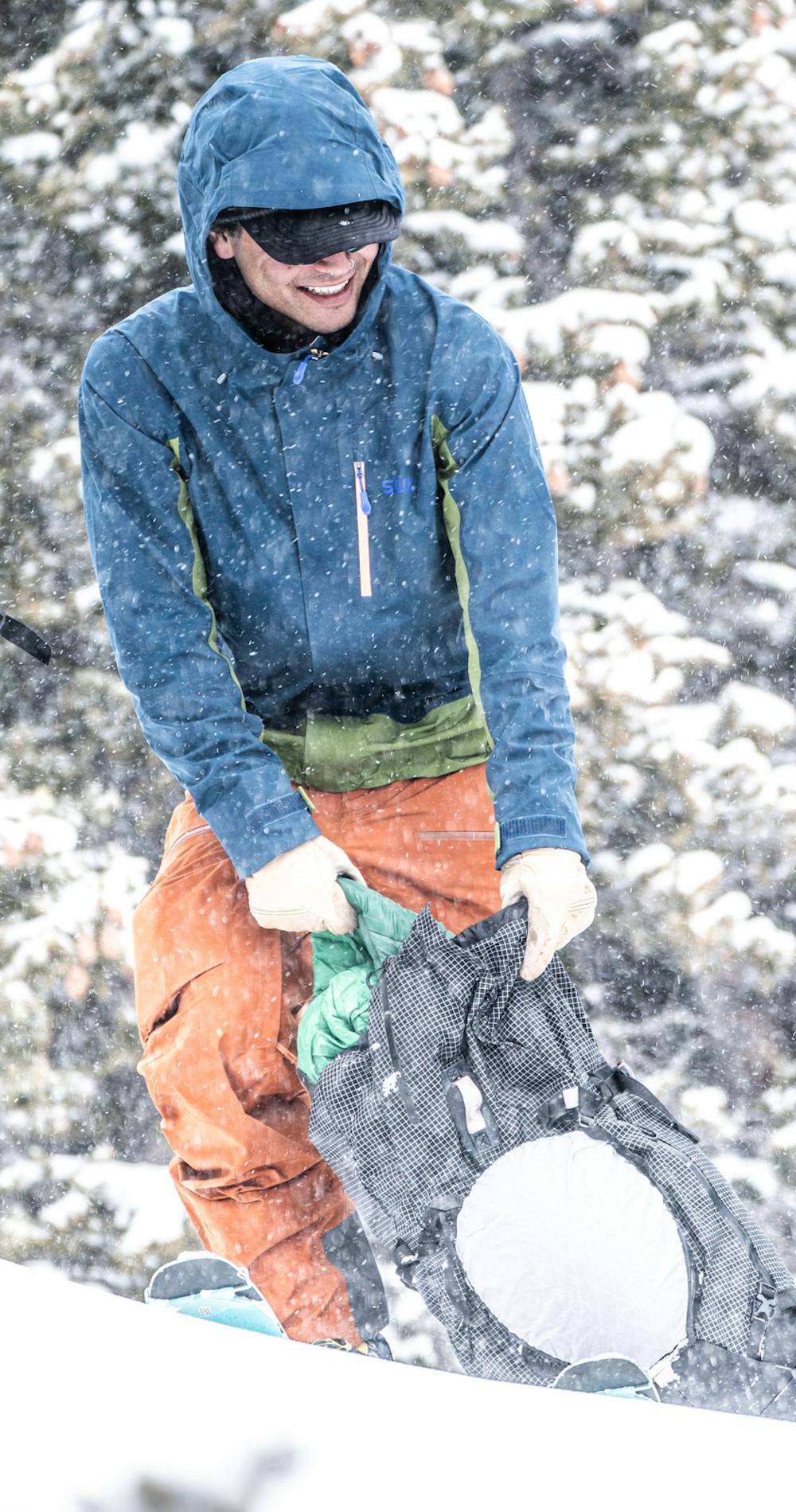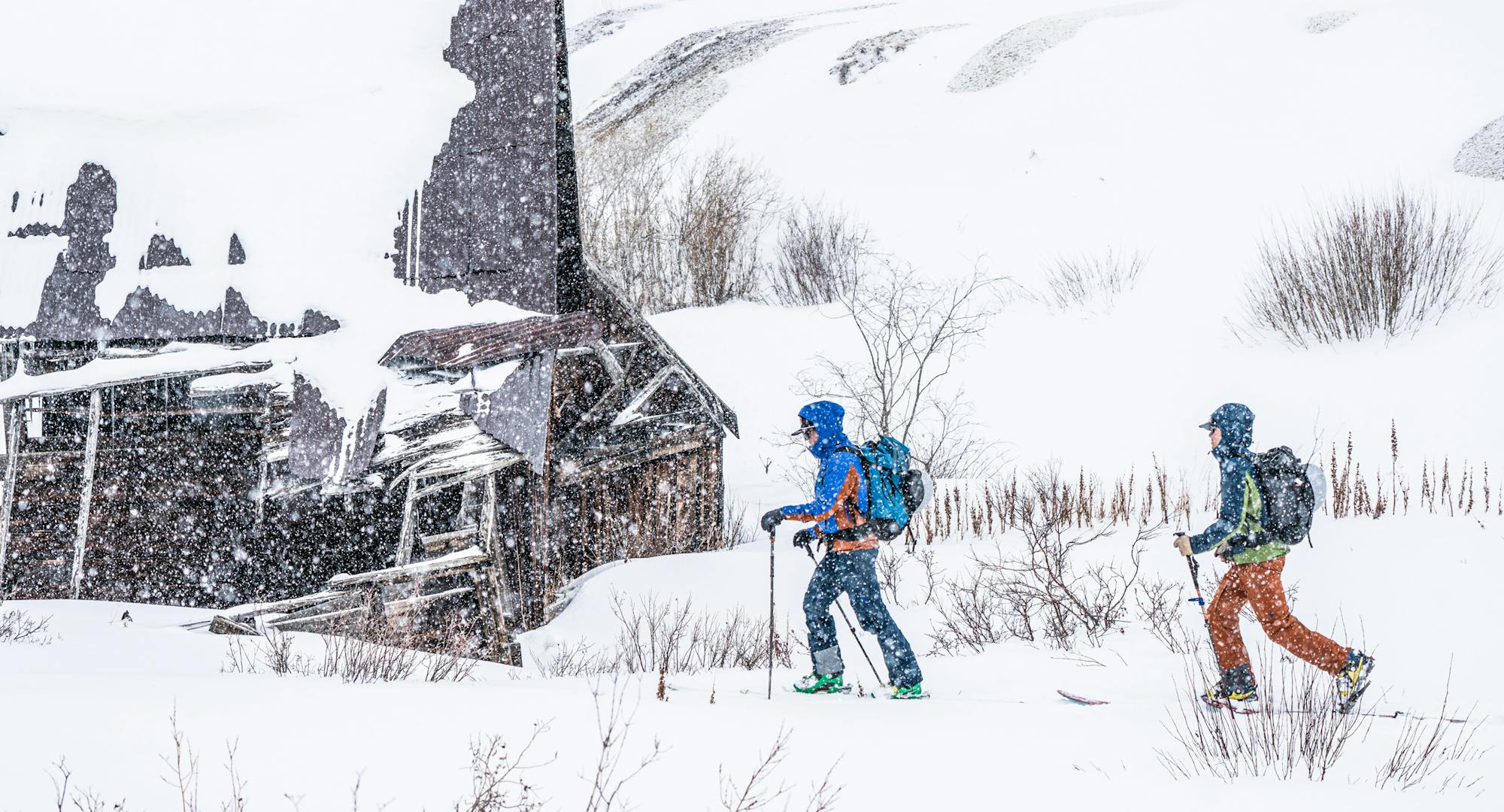Ambassador Spotlight: Untracked Lines
Words by Garry Schlag | Photos by Justin Talbot | 6 Min Read
How pursuing endurance mountain sports led tele-dog Garry Schlag to ask deeper questions about balancing their needs for the mountains, cultural and racial affinity, and creating a sense of home.
Photos by Justin Talbot
I first drove through Leadville, Colorado on my way to the Huron Peak trailhead to hike. I wrote in my diary that night at camp, “Leadville is a cool town and reminds me of home.” Little did I know, it would soon become home.
Weathering harsh winters at 10,200 feet requires a certain amount of tolerance for adversity and, for me, it revealed a proclivity for endurance sports I hadn’t known before. It also helped me practice noticing and meeting my needs. Cold months at high elevation pointed out the basic need to stay warm and dry, and keep myself fueled and hydrated, and time spent outside enjoying the cold months, once those basic needs are met, revealed deeper social needs.
That first winter between shoveling the sidewalk, keeping the stove burning and work, I explored the high elevation wonderland for myself. I leaned heavily into a winter routine of ski touring and practicing the art of the telemark turn. I got to know local winter routes through the Sawatch Range and built lasting friendships through ski touring. I marveled that my “backyard” activities could include skiing off the summits of 14ers, staying in 10th Mountain Division huts, and training for and completing the Elk Mountains Grand Traverse.
Pushing myself in endurance activities allowed me to deeply connect with adventure partners and myself through deep conversations on the skin track and shared experiences with the wonders of nature. Each long day out was an opportunity to observe high country geology and ecology that allowed me to connect with the landscape itself. To me, these connections built as a result of perseverance are the greatest rewards of endurance activities.
After persistent winters we were rewarded with long, sunny days ripe for biking and running. Leadville provided access to stunning summer trail networks and grand ridgeline and alpine lake adventures galore. With the presence of the Leadville Race Series and a local community of ultra runners and dedicated mountain bikers, it was hard not to stay involved in endurance sports year-round.
Each Leadville Race Series event was another reason to bike and run local trails and ridges from dawn until dusk, and the races themselves were expressions of excitement and love for Leadville. In no time, endurance fitness became a keystone habit that I organized my life around—ski touring, trail running, mountain biking, and all the small, shared moments that come with a day out doing each, became a need. With no history of running in my life, I surprised myself by finishing the Leadville Trail Marathon my first year in town. By the end of my five years in Leadville I’d have another Leadville Trail Marathon finish, a Leadville Trail 100 Mountain Bike belt buckle, and a coveted Leadville Trail 100 Run DNF to my name. I was lucky to race with a massive crew of local friends and family at each aid station.
But for all the natural beauty and outdoor access needs that Leadville met, there are others that it simply, and sadly, could not. Living in a mountain town like Leadville meant forgoing racial and ethnic affinity. In the ski and outdoor worlds, I am usually the only person of color in the group, punctuated by rare moments of affinity with other BIPOC folks (Black, Indigenous, People of Color). Meanwhile, I noticed my white peers have this affinity almost all the time. Reflecting on this fact, I began to recall stories of anti-Asian racism from my hometown of Park City’s mining history, read about similar events taking place in Leadville, and grew aware of the scantly detailed history of Ute Indian removal from the greater Leadville area by advancing mining interests.
At a Black Lives Matter Leadville community event, a beloved ex-mayor singled out my friend Lupe and me as the only people of color at the meeting. The white servers at everyone’s favorite Arkansas Valley Asian fusion restaurant mis-explained Japanese manners to me and served bowls of Japanese food with chopsticks upright in them. Tourists openly commented on my facial bone structure and guessed, wrongly, which tribe they thought I was from. Many asked, eventually, “What are you?” in a way that only someone whose racial group hasn’t been dehumanized or discriminated against by their nation can.
Skiing with friends in the alpine is fun, but some of my racialized experiences in Leadville were decidedly less so. The trade-off between the two is anything but a fair or easy choice to make when mountain town living feels as wrapped up in your identity as race is. These are experiences that, in a predominantly white community, go without much notice or critique. These experiences are not uncommon, and they stood starkly against the distinct lack of racially validating mountain town experiences I had. While Leadville is often touted as an “outdoorists’ paradise,” I realized that it couldn’t be paradise for me, yet. For me, this lifestyle was an endurance activity of its own. It wasn’t until recently that I recognized my need to actively pursue racial affinity in my life.
This realization came from a series of skin track conversations with friends during which I verbalized that I wanted to connect with my Japanese heritage in my adult life. The more I skied, the more I talked about it, and the more it revealed itself as imperative–a need. It quickly became clear to me, and to my friends, that I simply would not be able to do that the way I wanted to while living in Leadville. In my work as an outdoor educator I teach students about noticing and meeting their needs during backcountry expeditions, and there I was in the backcountry learning a new, massive need of my own that required my attention.
I knew there were places in the world where I could pursue telemark skiing and other outdoor passions and have racially validating experiences—where I could see people who look like me, eat appropriately served Japanese food, access a Japanese market in a closer-than-two-hour-drive radius, and hear and read my mother tongue in public and have opportunities to study it. The mountain town’s contrasts with a city slowly transformed from a reason to stay to a reason to leave, at least in terms of cultural and racial diversity.
Leadville taught me much about love and community, endurance and my physical limits, and the differences between mountain town and city that I’ll always appreciate. It supported a loving community centered around shared values that elevated and improved my life. It taught me that I am capable of running a marathon, biking 100 miles, finishing the Grand Traverse, and great things in general if I want to. It taught me that I can leave a so-called paradise when my needs exceed what the place can provide.
My love for Leadville includes being realistic about its limits beyond outdoor access and tight-knit, loving community, and part of my Leadville community’s love for me was understanding that. So, I left Leadville in search of a more culturally diverse experience and racial affinity—what I need right now. City living is a new adventure, and my time in Leadville will serve me in expanding my comfort zone in this new way.
Top Stories
Check Out All the Top Stories
Follow us @stio
See how people are living the mountain life everyday in our gear.

